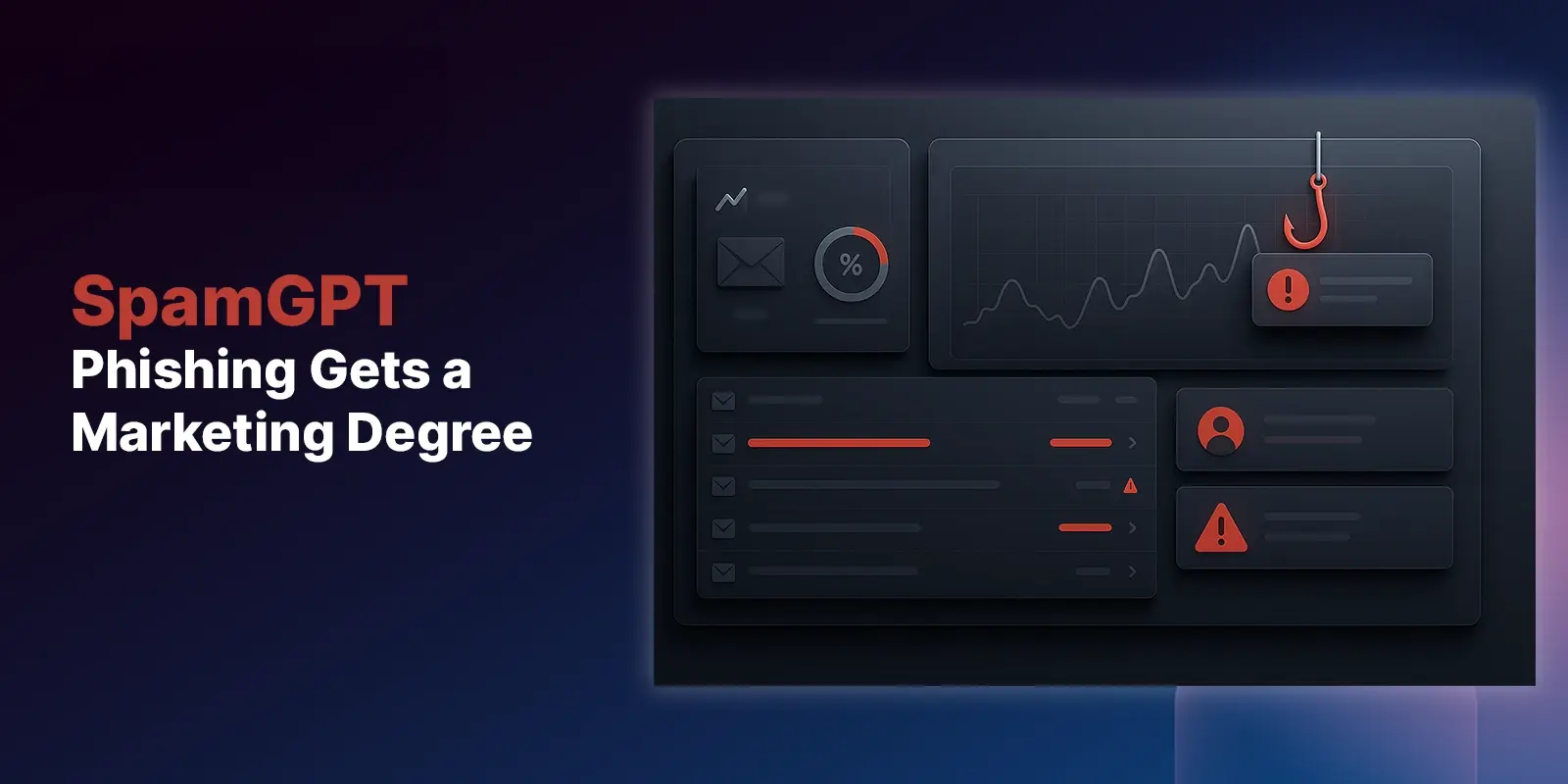Table of Contents
Email remains the primary gateway for cyber threats, with over 90% of all cyberattacks beginning with phishing emails. As a CISO, pinpointing these threats and deploying effective countermeasures is paramount. This blog outlines the importance of a robust email security strategy to shield your organization from sophisticated threats like phishing and business email compromise (BEC), which traditional defenses might miss.
Understanding Risk Exposure in Email Security
Common Email Security Threats
- Phishing: According to Osterman Research, phishing remains a significant threat to organizations, with 82% of respondents reporting that the number of phishing attacks had increased or stayed the same over the past 12 months. This highlights the growing sophistication and persistence of phishing attacks, leading to widespread security incidents (Osterman Research: The Business Cost of Phishing, October 2022).
- Business Email Compromise (BEC): The FBI Internet Crime Report for 2022 indicates that BEC scams resulted in global losses of $2.7 billion, with the average cost per incident increasing to $125,611 (Osterman Research: Defending the Enterprise: The Latest Trends and Tactics in BEC Attacks, March 2023). However, in the FBI Internet Crime Report for 2023, BEC scams rose to result in global losses of $2.9 billion.
- Image-based: Osterman Research confirms that 94% of organizations are failing to catch image-based and QR code phishing attacks, resulting in false negatives that are delivered to users’ inboxes (Osterman Research: Fortifying Against Image-based and QR Code Attacks, February 2024).
Impact on Organizations
Email threats can lead to severe consequences for organizations:
- Data Breaches: Unauthorized data access can inflict substantial financial and reputational harm. In February 2024, 25 departments of Los Angeles County's government were breached due to a phishing campaign that allowed hackers to obtain sensitive data on over 6,000 people. According to IBM's 2023 Cost of a Data Breach Report, "The global average cost of a data breach in 2023 was USD 4.45 million, a 15% increase over 3 years."
- Operational Disruptions: Ransomware attacks as a result of successful phishing campaigns can severely disrupt business operations, leading to significant downtime. According to Veaam, it takes an average of 24 days to regain a foothold on the organizations' production data after every attack. Recently, software provider CDK Global was a victim of two cybersecurity incidents that led to massive outages impacting thousands of car dealerships.
- Financial Losses: As mentioned earlier, the FBI Internet Crime Report for 2023 indicates that BEC scams resulted in global losses of $2.9 billion
- Regulatory Penalties: Non-compliance with data protection laws, like HIPAA or GDPR, can lead to hefty fines and legal consequences. In 2023, the US Department of Health and Human Services Office for Civil Rights settled its first investigation of a phishing attack, which Lafourche Medical Group settled for $480,000.
The Strategic Imperative of Comprehensive Email Security
Adopting a Holistic Security Framework
Enhanced email security requires a multi-layered defense approach that integrates effortlessly with current systems, delivering solid protection. This holistic approach is designed to safeguard against vulnerabilities at every level, preventing any single point of failure from compromising your organization's security posture.
Core Components of an Effective Email Security Strategy
- Adaptive AI and Machine Learning: AI is now essential in modern email security. It uses algorithms to quickly and accurately sort through large amounts of data, spot patterns, and predict threats—tasks that far exceed what humans can do alone. Machine Learning, a branch of AI, helps computers learn from past data, improving their ability to detect threats on their own over time. Adaptive AI-driven email security solutions have significantly enhanced the detection and mitigation of email threats. According to Osterman’s The Role of AI in Email Security, 35% of respondents saw an improvement beyond their earlier baseline by adding AI-enabled protections.
- Automation: Automation is crucial in optimizing security operations and minimizing human error. By automating the detection, isolation, and remediation processes for email security, these systems significantly reduce the workload on IT staff, allowing them to focus on more strategic tasks. Osterman Research report, The Role of AI in Email Security, notes that the second highest-rated buying factor (39.9% extremely important) is automated mitigation and remediation to minimize the burden on IT and security staff.
- User Awareness Training: Educating users on the latest phishing tactics and conducting regular simulation drills are vital components of a thorough email security strategy. Ongoing training provides employees with essential skills to quickly recognize and respond to security threats. Osterman Research report, Fortifying Against Image-based and QR Code Attacks, emphasizes the importance of cybersecurity awareness training and phishing simulations, noting that 80% of organizations are emphasizing training users and augmenting their current email security stack.
Advantages of Implementing Comprehensive Email Security Solution
- Reduced Risk Exposure
Implementing a comprehensive email security strategy significantly minimizes vulnerabilities within your organization. Adaptive AI, machine learning, and automation allow for the proactive identification and mitigation of advanced phishing threats before they escalate.
- Operational Efficiency
Integrating automation and AI technologies significantly alleviates the burden on IT departments. These automated systems manage the entire lifecycle of threat detection, quarantine, and remediation, allowing IT personnel to focus on more strategic initiatives. This shift boosts overall efficiency and drastically reduces the potential for human error.
- Enhanced Detection and Response
A robust email security system enhances real-time threat detection and response capability. AI-driven tools continuously monitor email traffic, identifying and flagging suspicious activities swiftly. This immediate detection enables quicker responses, preventing the spread of threats.
- Cost Savings
Investing in a thorough email security system is proactive and cost-effective. Organizations can significantly lower the financial repercussions of cyber incidents by preventing security breaches and minimizing downtime. Furthermore, the reduced manual oversight provided by automated systems decreases operational costs.
Strategic Implementation of Comprehensive Email Security
Assessment and Planning
Start by conducting a thorough evaluation of your existing email security architecture. Identify any vulnerabilities and potential risks. This process should include a detailed audit of your current security measures and discussions with stakeholders to gauge their security needs and concerns. Use the insights gained to craft a detailed plan outlining your objectives, timelines, and the resources needed to enhance your email security.
Try our 90-day scan back to discover what threats are hiding in your mailboxes!
Choosing the Right Solutions
Select email security solutions that are well-suited to your organization's specific requirements. Look for solutions equipped with AI-driven threat detection, automation capabilities, and integrated user training features. Ensure these solutions provide a robust defense against threats like phishing, malware, and business email compromise (BEC). Additionally, choose technologies that integrate smoothly with your existing IT infrastructure, bolstering your overall security without causing disruptions.
Integration
Integrate the chosen email security solutions seamlessly into your IT environment. API-based solutions are particularly valuable because they allow easy integration, scalability, and real-time communication between systems, ensuring your security measures are always current and responsive to new threats.
Continuous Improvement
Select a vendor that regularly adapts its detection engine to identify never-before-seen threats and provides options to quickly test and train your employees on current phishing practices.
Explore More Articles
Say goodbye to Phishing, BEC, and QR code attacks. Our Adaptive AI automatically learns and evolves to keep your employees safe from email attacks.

/Concentrix%20Case%20Study.webp?width=568&height=326&name=Concentrix%20Case%20Study.webp)













.webp?width=100&height=100&name=PXL_20220517_081122781%20(1).webp)


.png)